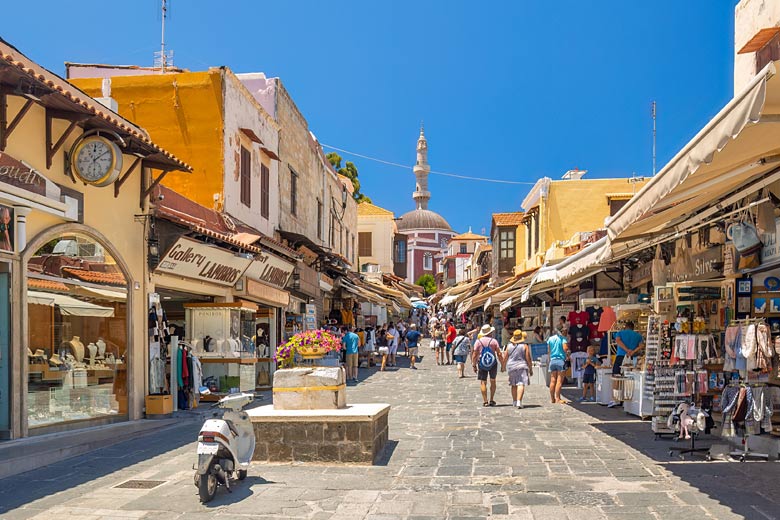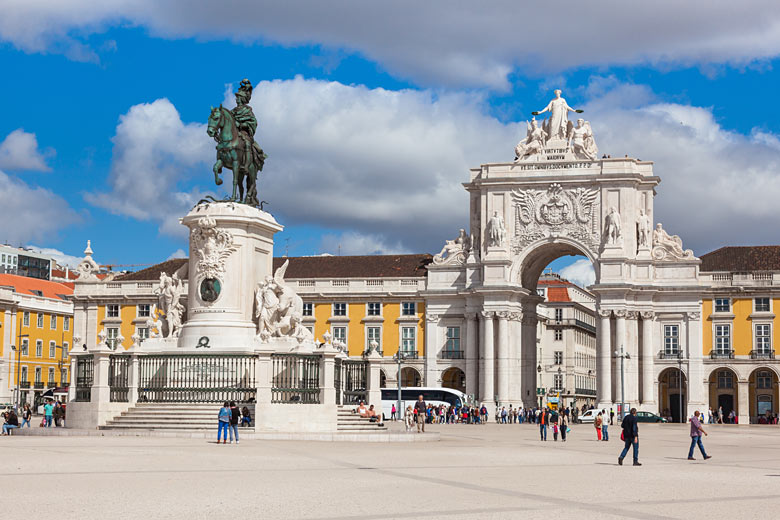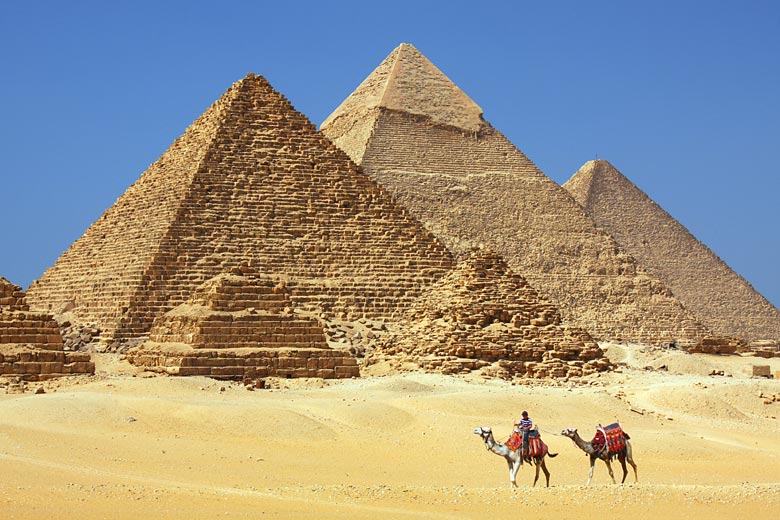How to experience the cultural side of Mauritius
One of the pulls of Mauritius* is the wide variety of cultural activities to experience, from traditional dances to international horse races.
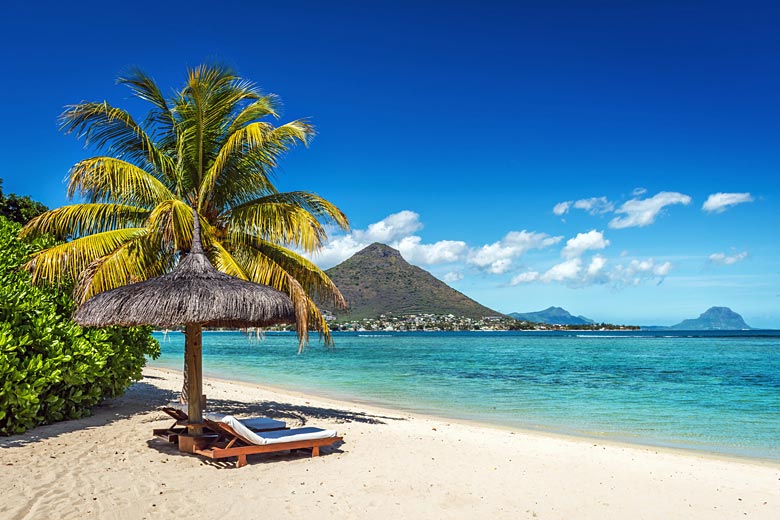
You can experience this Indian Ocean* island's culture in multiple ways from eating the tempting dishes reflecting the diverse nationalities that reside in the country to joining one of the many colourful festivals.
Take some local culture home with you in the form of a novel giving a glimpse into local life or a pretty painting depicting the scenes of a Mauritian fish market, imposing mountains or even the traditional séga dance.
Lastly, there are intricate temples to explore too. Whatever you do in Mauritius, its vibrant culture is sure to be entwined.
Getting to Mauritius: check out the current savings on holidays to Mauritius with TUI*.
The cuisine
Mauritian flavours flow between Chinese, Indian, European and African influences, a true melting pot. A must-try is the commonly found gateaux piments, crispy balls filled with a split pea, coriander and chilli filling, the perfect snack.
It's hard to beat a Mauritian biryani, then there's fish vindaye, a curry made with turmeric, mustard, onions and garlic, producing an addictive tangy flavour.
Bol Renversé or 'upside-down bowl' is a rice, vegetable, meat or seafood layered dish, served with a fried egg on top.
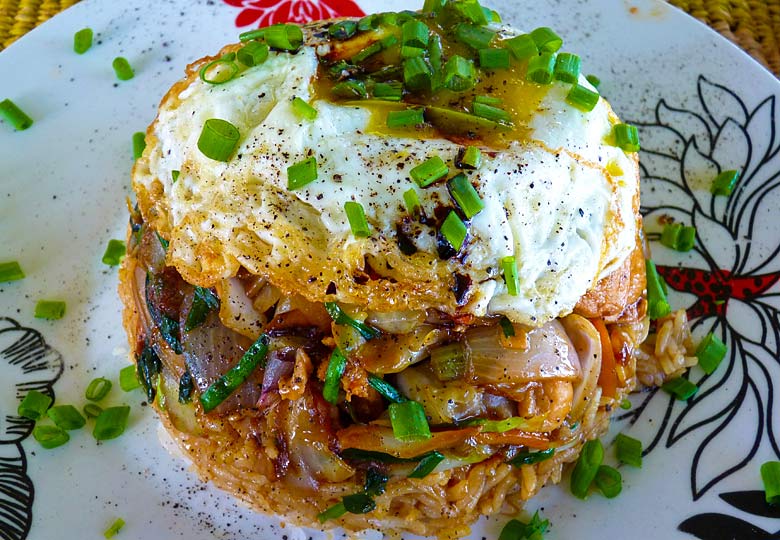
Meanwhile, dholl puri are 'pancakes' made from split peas, turmeric and cumin cooked on a pan called a tawa; they are filled with potato, kidney bean curry or rougaille (tomato stew).
For something sweet, try poudine maïs, a creamy polenta pudding which is delicately spiced with vanilla and cardamon and topped with grated coconut.
The sport
Whilst locals play and succeed at football, volleyball and basketball, it is horseracing which is their national sport. You could visit Champ de Mars Racecourse and experience a horserace up close; major races can attract crowds in excess of 20,000.

The racecourse is the oldest in Mauritius, founded in 1812. For a VIP racing experience go to Crown Lodge and mingle with local jockeys, trainers and owners.
The local racing season goes from late March to early December, culminating in a colourful 'International Jockeys' weekend, bringing together jockeys from all over the world, who go into four teams: Mauritius, Europe, former champions and the rest of the world, competing in four races.
The literature
Mauritian literature is mainly written in English, French, Creole and Indian languages. Jean Marie Gustave Le Clézio is a respected Franco-Mauritian novelist of over 40 works. He won the 1963 Prix Renaudot for his novel Le Procès-Verbal (The Interrogation) as well as the 2008 Nobel Prize for literature talks to Maya Jaggi.
More modern Mauritian authors to look out for include the Mauritian-French author Nathacha Appanah's novel called The Last Brother, a coming-of-age novel set in World War II Mauritius.
Mauritian writer Renee Asgarally made Mauritian history by being the first female Mauritian author to write in Creole with her debut Quand montagne prend difé.
The music
Music is entwined in Mauritian culture, most famously with the séga style musical dance, which is UNESCO listed as 'Representative List of the Intangible Cultural Heritage of Humanity'.
It is a vibrant show rooted in Creole culture; the lyrics are in Creole, at times blended in with other languages and a box rattle, drum and triangle keep the beat.

The choreographed dancers are colourful, the men with vibrant shirts and straw hats; a nod to their ancestors and the women don long skirts and petticoats.
You can often see a séga in the street and everyone is welcome to join in. You can even look the part by purchasing a séga outfit at the central market in Port Louis* or Grand Baie*.
The festivals
Due to the varied religions including Christianity, Hinduism, Islam and Buddhism, there are festivals throughout the year to mark different occasions.
In February, Maha Shivaratri, the three-day Hindu festival takes place to honour the Great Night of Lord Shiva. Hindus dressed in white flock to the sacred lake Grand Bassin.
In March, you mustn't miss the colourful festival of Holi, where people throw powered 'paint' over one another to celebrate the beginning of harvest.
Then, in October and November celebrate Diwali, the Hindu Festival of Lights, and from December, see the Tamil ceremony of fire walking, where people walk across hot coals for prayer and purification at their temple.
The art
The art found in Mauritius is rooted in diversity including European, African and Asian influences and there are a number of galleries to purchase some distinctive pieces.
The Seebaluck Art Gallery is a two-storied art gallery, known to be one of the biggest and run by well-known local artist Chayetan Seebaluck. The Partage Gallery is set within a house, each room showcasing a different theme and is another locally-owned business.
One of the most renowned Mauritian galleries is Galerie du Moulin Cassé, inside a former sugar mill and surrounded by tropical gardens, it's well worth a visit.
Go to the artisan market at Caudan Waterfront to find local crafts including intricate woodwork, hand-woven colourful baskets, embroidered linen, jewellery, objet d'art adorned with shells, glassware and paintings.
The temples
Many Indians have called Mauritius home since they started coming in 1835 seeking work, so it is no surprise there is a plethora of pretty Hindu temples to see.
Mauritians' religion is predominantly Hinduism but you don't need to be religious to visit a temple. Go to Maheswarnath Shiv Temple to see the Bengal-style temple architecture, which is over 130 years old.
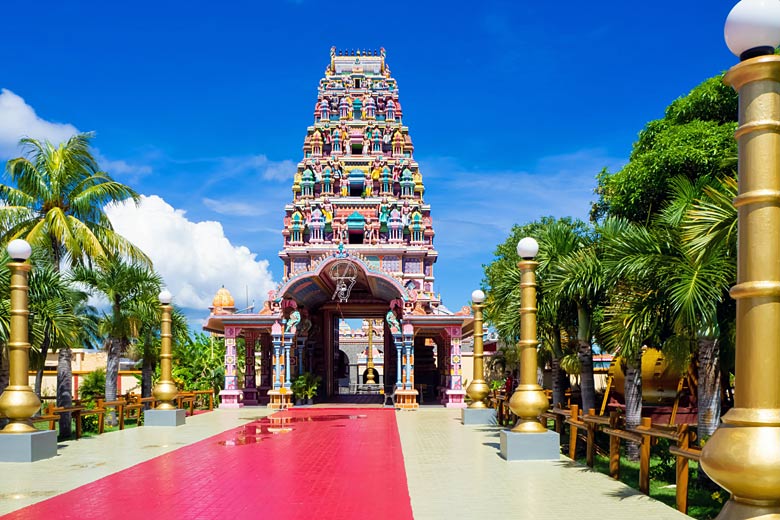
Ganga Talao Temple is a complex of a few temples, located near a crater lake in the south of Mauritius, in the district of Savanne; don't miss the statue of a Jain god, a huge statue of Goddess Durga, and an impressive 33 meters high statue of God Shiva.
Another temple not to miss is Shiv Shakti Mandir, built in 1922 and found along the Vacoas-Phoenix border. Here, the pristine white temple is devoted to Lord Shiva.
Climate in Mauritius
| Jan | Feb | Mar | Apr | May | Jun | Jul | Aug | Sep | Oct | Nov | Dec | |
|---|---|---|---|---|---|---|---|---|---|---|---|---|
| Maximum daytime temperature °C | ||||||||||||
| Hours of sunshine (daily) | ||||||||||||
| Days with some rainfall | ||||||||||||
| Sea temperature °C |
The above guide shows the climate in Port Louis. Find out more about conditions across the nation in our complete guide to the climate in Mauritius.
Ready to experience Mauritius? Don't miss the latest online deals and discounts on holidays with TUI.
More about Mauritius
- Overview
- Best time to visit
- Weather by month
- 5-day weather forecast
- Destinations
- Travel advice
- Deals & discounts
Mauritius by month
Jan Feb Mar Apr May Jun Jul Aug Sep Oct Nov Dec
Explore holidays in the sun for less
- Beach holidays
- Family holidays
- City breaks
- Summer holidays
- Winter sun holidays
- Holiday offers
- Top travel brands
- Airlines & flights
- Discount hotels
- Airport parking deals
- TUI
- Jet2holidays
- easyJet holidays
- Love Holidays
- Black Friday sales
Airport parking
- Manchester Airport
- Stansted Airport
- Bristol Airport
- Luton Airport
- Birmingham Airport
- Edinburgh Airport
- Gatwick Airport
- Glasgow Airport
- Newcastle Airport
Airport lounges
- Manchester Airport
- Birmingham Airport
- Bristol Airport
- Edinburgh Airport
- Glasgow Airport
- Heathrow Airport
- Newcastle Airport
- Stansted Airport
- Gatwick Airport
Be inspired
Get your weekly fix of holiday inspiration from some of the world's best travel writers plus save on your next trip with the latest exclusive offers
We promise not to share your details
























